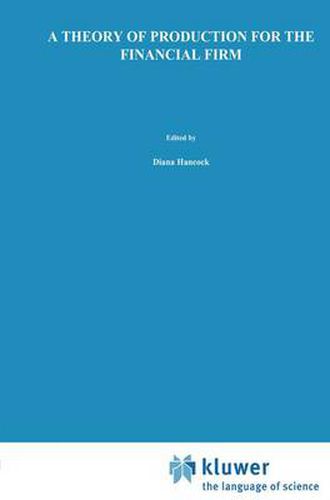Readings Newsletter
Become a Readings Member to make your shopping experience even easier.
Sign in or sign up for free!
You’re not far away from qualifying for FREE standard shipping within Australia
You’ve qualified for FREE standard shipping within Australia
The cart is loading…






This title is printed to order. This book may have been self-published. If so, we cannot guarantee the quality of the content. In the main most books will have gone through the editing process however some may not. We therefore suggest that you be aware of this before ordering this book. If in doubt check either the author or publisher’s details as we are unable to accept any returns unless they are faulty. Please contact us if you have any questions.
Furthermore, if the effects of regulations on user costs are excluded, it is impossible to analyze monetary policy effects. Chapter 2 examines the principal areas of regulation that affect user costs. For example, reserve requirements, as administered by the Federal Reserve, act as a tax on financial firms so covered. Required reserves earn no return to the financial firm and there is foregone revenue. Deposit insurance increases the user cost of servicing deposits to the banks. Interest rate regulations place limits on interest rates on time de posits, or prohibit payments on demand deposits during part of the period studied. Underlying all these are the open market operations of the Federal Reserve, and their effects on interest rates and the quantities of financial goods. Chapter 2 reveals that previous work on the estimation of bank tech nologies is incomplete, and that the regulations require modelling as a part of the profit maximizing structure. 1.3 User Cost Derivation Chapter 3 discusses the construction of user costs. These are derived for the services from all assets or liabilities on a bank balance sheet or appearing on the income statement. The user cost formulation permits goods to be classified as outputs and inputs. Those with a positive user cost, where expenditures per unit exceed revenues per unit, are inputs. The unit for financial goods such as loans or deposits is one dollar per period. Goods with a negative user cost, with expenditures falling below revenue per unit, are outputs.
$9.00 standard shipping within Australia
FREE standard shipping within Australia for orders over $100.00
Express & International shipping calculated at checkout
This title is printed to order. This book may have been self-published. If so, we cannot guarantee the quality of the content. In the main most books will have gone through the editing process however some may not. We therefore suggest that you be aware of this before ordering this book. If in doubt check either the author or publisher’s details as we are unable to accept any returns unless they are faulty. Please contact us if you have any questions.
Furthermore, if the effects of regulations on user costs are excluded, it is impossible to analyze monetary policy effects. Chapter 2 examines the principal areas of regulation that affect user costs. For example, reserve requirements, as administered by the Federal Reserve, act as a tax on financial firms so covered. Required reserves earn no return to the financial firm and there is foregone revenue. Deposit insurance increases the user cost of servicing deposits to the banks. Interest rate regulations place limits on interest rates on time de posits, or prohibit payments on demand deposits during part of the period studied. Underlying all these are the open market operations of the Federal Reserve, and their effects on interest rates and the quantities of financial goods. Chapter 2 reveals that previous work on the estimation of bank tech nologies is incomplete, and that the regulations require modelling as a part of the profit maximizing structure. 1.3 User Cost Derivation Chapter 3 discusses the construction of user costs. These are derived for the services from all assets or liabilities on a bank balance sheet or appearing on the income statement. The user cost formulation permits goods to be classified as outputs and inputs. Those with a positive user cost, where expenditures per unit exceed revenues per unit, are inputs. The unit for financial goods such as loans or deposits is one dollar per period. Goods with a negative user cost, with expenditures falling below revenue per unit, are outputs.